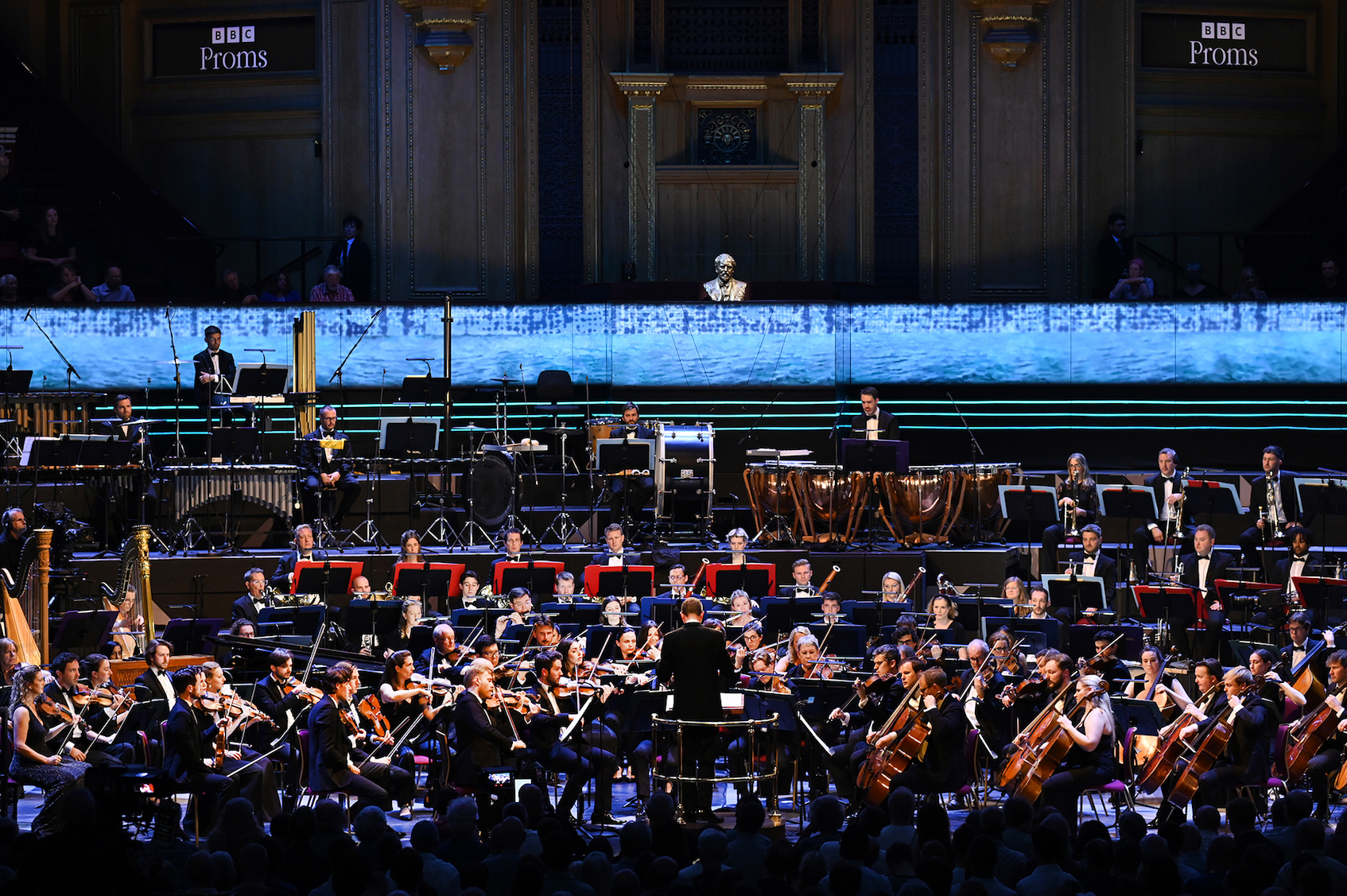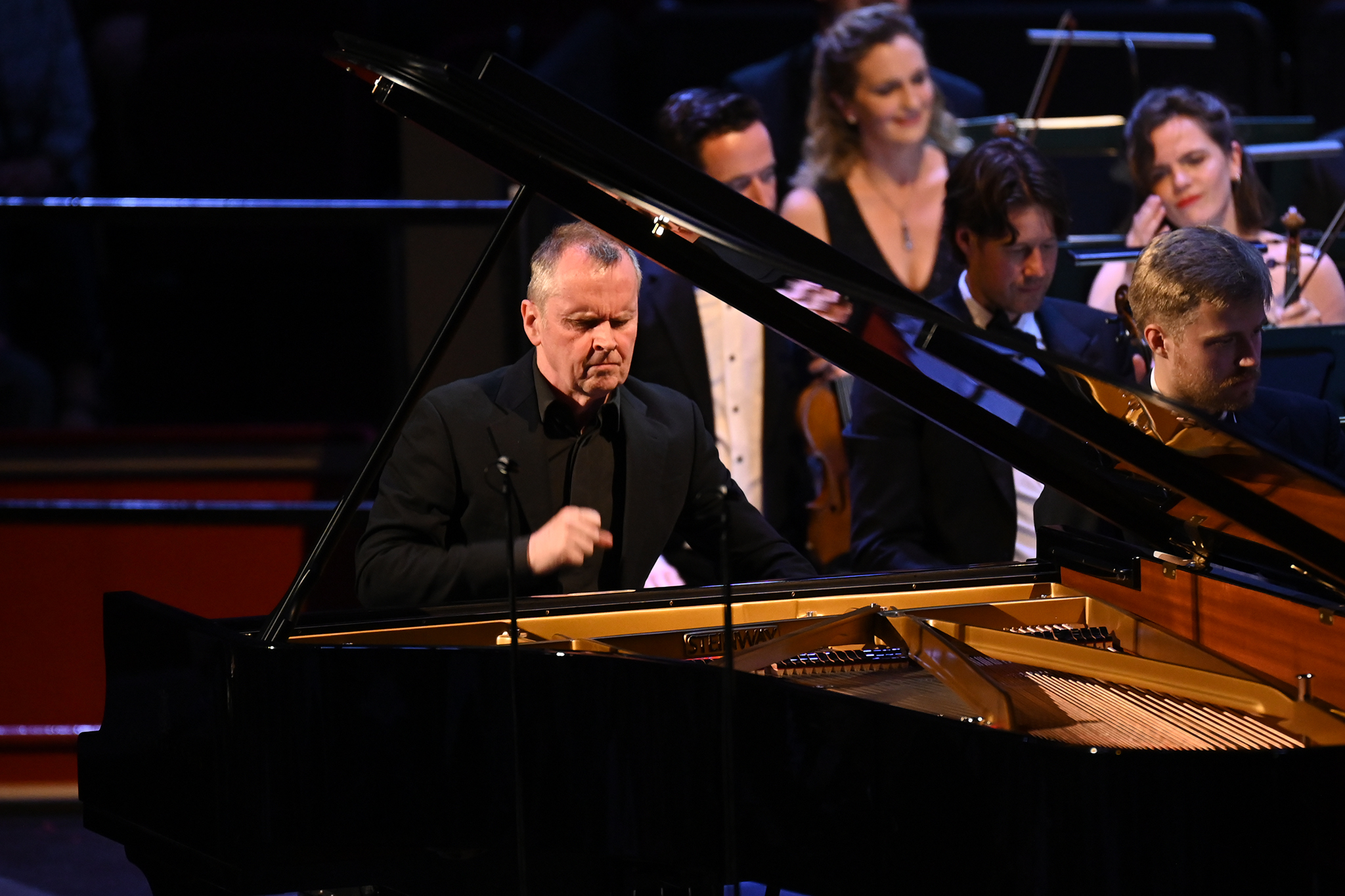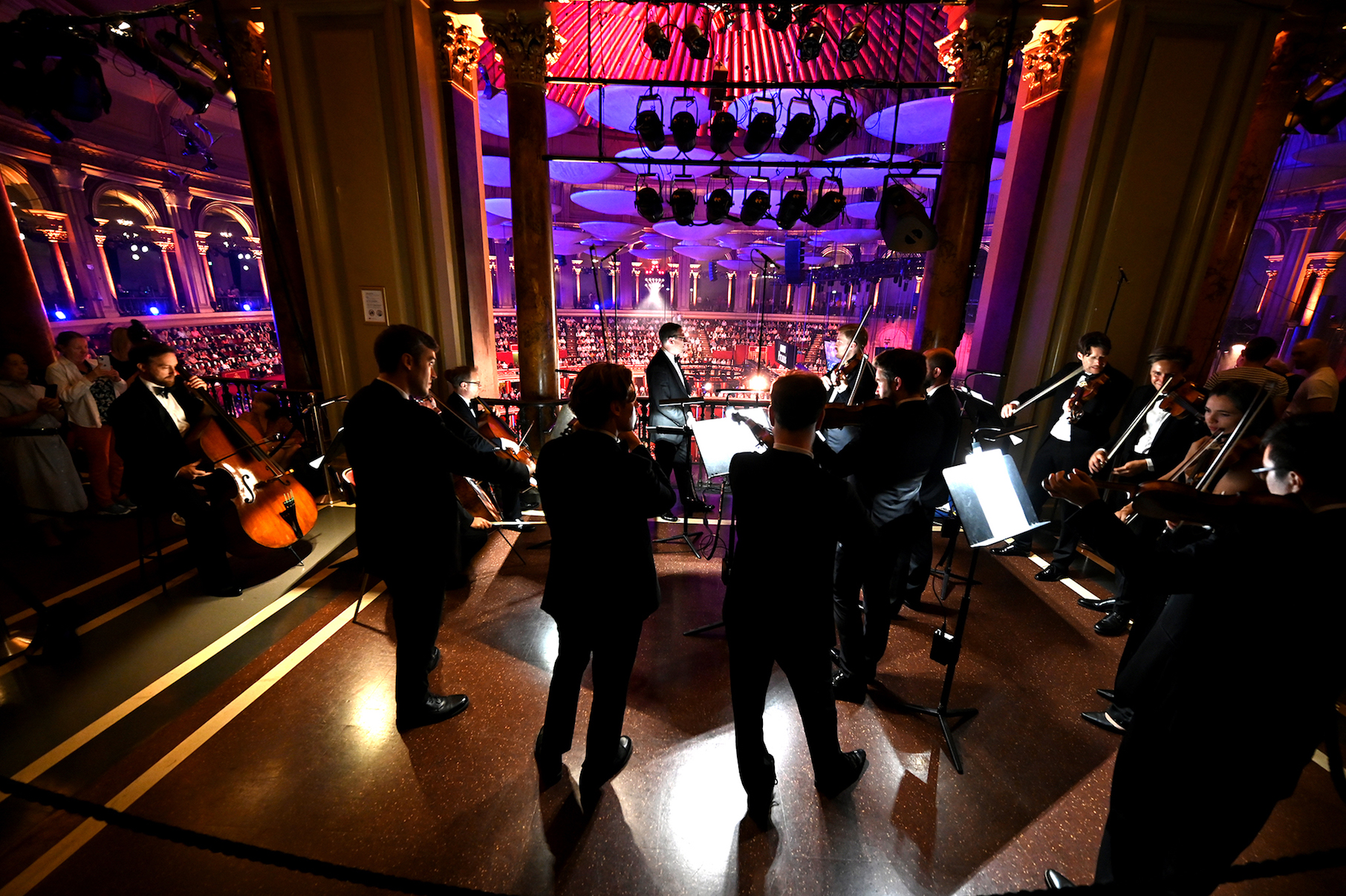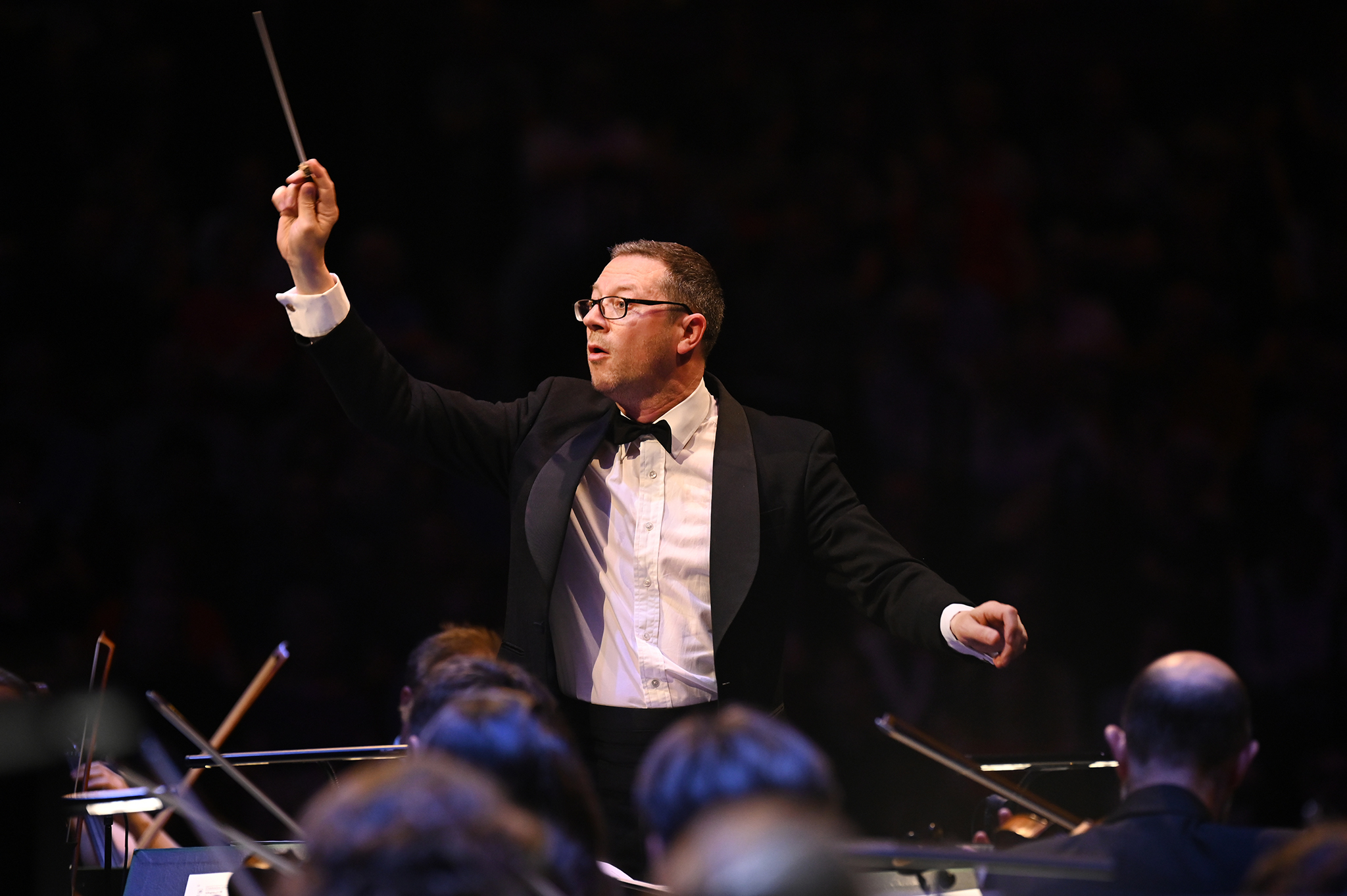Prom 21, Osborne, Sinfonia of London, Wilson review - a spectacular drive across America | reviews, news & interviews
Prom 21, Osborne, Sinfonia of London, Wilson review - a spectacular drive across America
Prom 21, Osborne, Sinfonia of London, Wilson review - a spectacular drive across America
The ad hoc super-orchestra takes us on a deluxe transatlantic tour
Does John Wilson ever stumble?
The Sinfonia of London, the Gateshead-born conductor’s ad hoc all-star super-band, rode into a full-to-bursting Royal Albert Hall once again last night with an all-American Proms programme that promised not just crowd-pleasing Stateside favourites (Gershwin’s Rhapsody in Blue in its centenary year, Barber’s Adagio for Strings) but the towering Yosemite peak of John Adams’s massive symphony-in-all-but name, Harmonielehre.
There were a couple of moments, especially in a sometimes routine rendering of Copland’s Billy the Kid, when their famously blazing and brilliant ensemble sound seemed to mislay a little of its firepower. Yet they conquered the cloud-capped summits of Adams’s ridiculously improbable masterpiece from 1985 (am I a machine-tooled West Coast minimalist or a post-Mahlerian late romantic? Hey, folks, let’s be both!) as if scampering up a gentle slope. I hope we never take, not just this orchestra’s glossy high-definition virtuosity, but Wilson’s ferociously vigilant attention to instrumental and dynamic detail, for granted. He makes every gig into a gala occasion. This was no exception. 
Copland’s ballet suite Billy the Kid has a similarly edgy relationship with the folk tunes it enlists to tell the outlaw’s tale: almost 1930s Russian-sounding dissonant passages vie with backwoods ditties. The Sinfonia strings, led by Charlie Lovell-Jones, ranged, then galloped, luxuriously over the Western plains as woods and brass filled the empty landscape with their piquant songs. Wilson seemed to allow a little too much leisurely expansiveness as the cowboys dawdled for a bit too long. Unusually for him, moments in the dances almost dragged. The sounds of the old West still glowed, however, as the ferocious percussion gunfight ended in Copland’s offbeat polka.
In contrast, Barber’s Adagio for Strings felt taut, retrained, controlled. Wilson’s tight leash and grasp of shape and pulse meant that elegy never subsided into schmaltz. The sheen, poise and gravitas of the strings – their keening sustained in gorgeously extended phrases – delivered everything we expect from this outfit, and more. 
You have to hear that relentless drive, and Wilson’s piston beat – not just rather brisk, but arguably over the speed limit – never softens it. The brass snorted and bit, while the strings, especially in the broad and sumptuous second theme, embraced us in a deep plush hug. Osborne’s debonair legato excursions made us remember that Gershwin, for all his funkiness, still had the great Romantic piano showpieces firmly in mind. His encore, Ellington’s “Things ain’t what they used to be”, beautifully channeled the refined spirit of Oscar Peterson. There’s a certain kind of cool cross-genre aesthete who would have found in this the purest music of the evening.
That polo-necked snob would also have relished the post-interval performance of Charles Ives’s mystical meditation The Unanswered Question, with flutes on stage as unseen clusters of musicians (pictured below) high in the balconies – notably the forlorn, questing trumpet – throw ambiguous enquiries back and forth. Spare, bleak, quiet, the piece proved that Wilson can command small-group pianissimo hush as much as fortissimo blasts. He knows how to paint in slender austere marks as well as in a bold rainbow palette. 
Yet all this beauty harbours a beast. The crashing, grinding minimalist chug of the initial E minor chords never really leave the scene. Wilson’s relentless clarity and hard-driving rhythmic push – the mechanistic quality in his conducting that leaves some listeners cold – proved a perfect foil for the chromatic reveries of Adam’s unfolding themes in the first movement, and the melancholy, introspective nocturne-like music of his second act, “The Anfortas Wound”. Fountain’s solo trumpet guided us tenderly through this field of uneasy dreams, with its jolting eruptions of nightmare memories that allude to Mahler’s Tenth. 
After which, a rapturously strung-out audience needed to relax. But the Sinfonia’s encore, however playful, still kept us on our toes: Leroy Anderson’s motoric Boston Pops favourite, Fiddle Faddle. Even at rest, Wilson swings.
rating
Explore topics
Share this article
The future of Arts Journalism
You can stop theartsdesk.com closing!
We urgently need financing to survive. Our fundraising drive has thus far raised £49,000 but we need to reach £100,000 or we will be forced to close. Please contribute here: https://gofund.me/c3f6033d
And if you can forward this information to anyone who might assist, we’d be grateful.

Subscribe to theartsdesk.com
Thank you for continuing to read our work on theartsdesk.com. For unlimited access to every article in its entirety, including our archive of more than 15,000 pieces, we're asking for £5 per month or £40 per year. We feel it's a very good deal, and hope you do too.
To take a subscription now simply click here.
And if you're looking for that extra gift for a friend or family member, why not treat them to a theartsdesk.com gift subscription?
more Classical music
 Bizet in 150th anniversary year: rich and rare French offerings from Palazzetto Bru Zane
Specialists in French romantic music unveil a treasure trove both live and on disc
Bizet in 150th anniversary year: rich and rare French offerings from Palazzetto Bru Zane
Specialists in French romantic music unveil a treasure trove both live and on disc
 Scottish Chamber Orchestra, Ibragimova, Queen’s Hall, Edinburgh review - rarities, novelties and drumrolls
A pity the SCO didn't pick a better showcase for a shining guest artist
Scottish Chamber Orchestra, Ibragimova, Queen’s Hall, Edinburgh review - rarities, novelties and drumrolls
A pity the SCO didn't pick a better showcase for a shining guest artist
 Kilsby, Parkes, Sinfonia of London, Wilson, Barbican review - string things zing and sing in expert hands
British masterpieces for strings plus other-worldly tenor and horn - and a muscular rarity
Kilsby, Parkes, Sinfonia of London, Wilson, Barbican review - string things zing and sing in expert hands
British masterpieces for strings plus other-worldly tenor and horn - and a muscular rarity
 From Historical to Hip-Hop, Classically Black Music Festival, Kings Place review - a cluster of impressive stars for the future
From quasi-Mozartian elegance to the gritty humour of a kitchen inspection
From Historical to Hip-Hop, Classically Black Music Festival, Kings Place review - a cluster of impressive stars for the future
From quasi-Mozartian elegance to the gritty humour of a kitchen inspection
 Shibe, LSO, Adès, Barbican review - gaudy and glorious new music alongside serene Sibelius
Adès’s passion makes persuasive case for the music he loves, both new and old
Shibe, LSO, Adès, Barbican review - gaudy and glorious new music alongside serene Sibelius
Adès’s passion makes persuasive case for the music he loves, both new and old
 Anja Mittermüller, Richard Fu, Wigmore Hall review - a glorious hall debut
The Austrian mezzo shines - at the age of 22
Anja Mittermüller, Richard Fu, Wigmore Hall review - a glorious hall debut
The Austrian mezzo shines - at the age of 22
 First Person: clarinettist Oliver Pashley on the new horizons of The Hermes Experiment's latest album
Compositions by members of this unusual quartet feature for the first time
First Person: clarinettist Oliver Pashley on the new horizons of The Hermes Experiment's latest album
Compositions by members of this unusual quartet feature for the first time
 Gesualdo Passione, Les Arts Florissants, Amala Dior Company, Barbican review - inspired collaboration excavates the music's humanity
At times it was like watching an anarchic religious procession
Gesualdo Passione, Les Arts Florissants, Amala Dior Company, Barbican review - inspired collaboration excavates the music's humanity
At times it was like watching an anarchic religious procession
 Classical CDs: Camels, concrete and cabaret
An influential American composer's 90th birthday box, plus British piano concertos and a father-and-son duo
Classical CDs: Camels, concrete and cabaret
An influential American composer's 90th birthday box, plus British piano concertos and a father-and-son duo
 Cockerham, Manchester Camerata, Sheen, Martin Harris Centre, Manchester review - re-enacting the dawn of modernism
Two UK premieres added to three miniatures from a seminal event of January 1914
Cockerham, Manchester Camerata, Sheen, Martin Harris Centre, Manchester review - re-enacting the dawn of modernism
Two UK premieres added to three miniatures from a seminal event of January 1914
 Kempf, Brno Philharmonic, Davies, Bridgewater Hall, Manchester review - European tradition meets American jazz
Bouncing Czechs enjoy their Gershwin and Brubeck alongside Janáček and Dvořák
Kempf, Brno Philharmonic, Davies, Bridgewater Hall, Manchester review - European tradition meets American jazz
Bouncing Czechs enjoy their Gershwin and Brubeck alongside Janáček and Dvořák
 Solomon, OAE, Butt, QEH review - daft Biblical whitewashing with great choruses
Even a top soprano and mezzo can’t make this Handel paean wholly convincing
Solomon, OAE, Butt, QEH review - daft Biblical whitewashing with great choruses
Even a top soprano and mezzo can’t make this Handel paean wholly convincing

Add comment